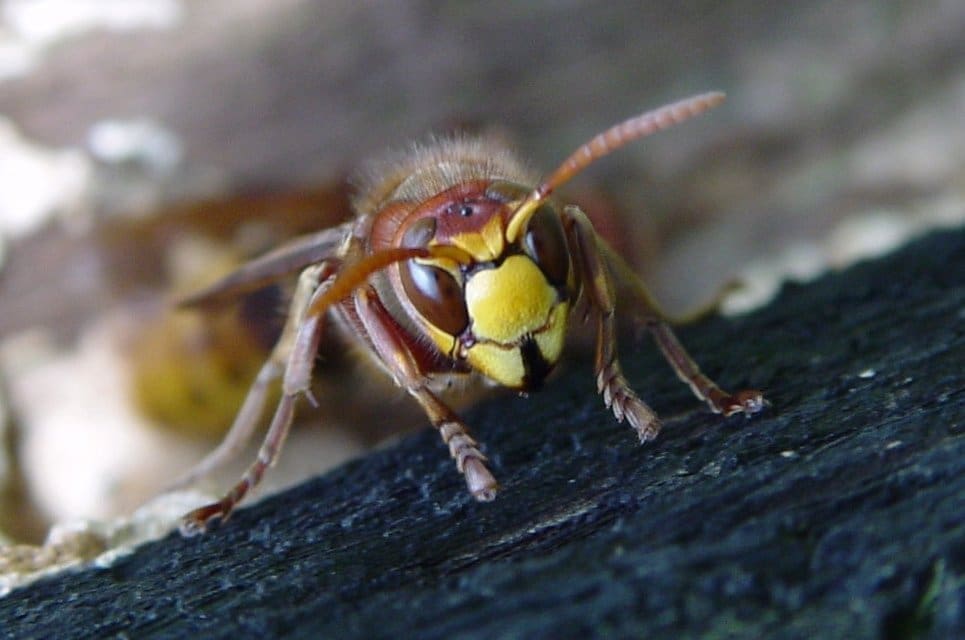
What’s the Difference Between Wasps and Hornets?
The familiar buzz of a flying insect nearby can send shivers down anyone’s spine, but is that menacing visitor a wasp or a hornet? This common confusion isn’t surprising, as these remarkable insects share a complex family tree.
All hornets are technically wasps, but not all wasps are hornets. Although they belong to the same family (Vespidae), hornets represent a specific genus (Vespa) that has evolved unique traits over millions of years.
Understanding their differences is important for anyone who wants to safely coexist with or manage these insects around their property.
Size and Appearance
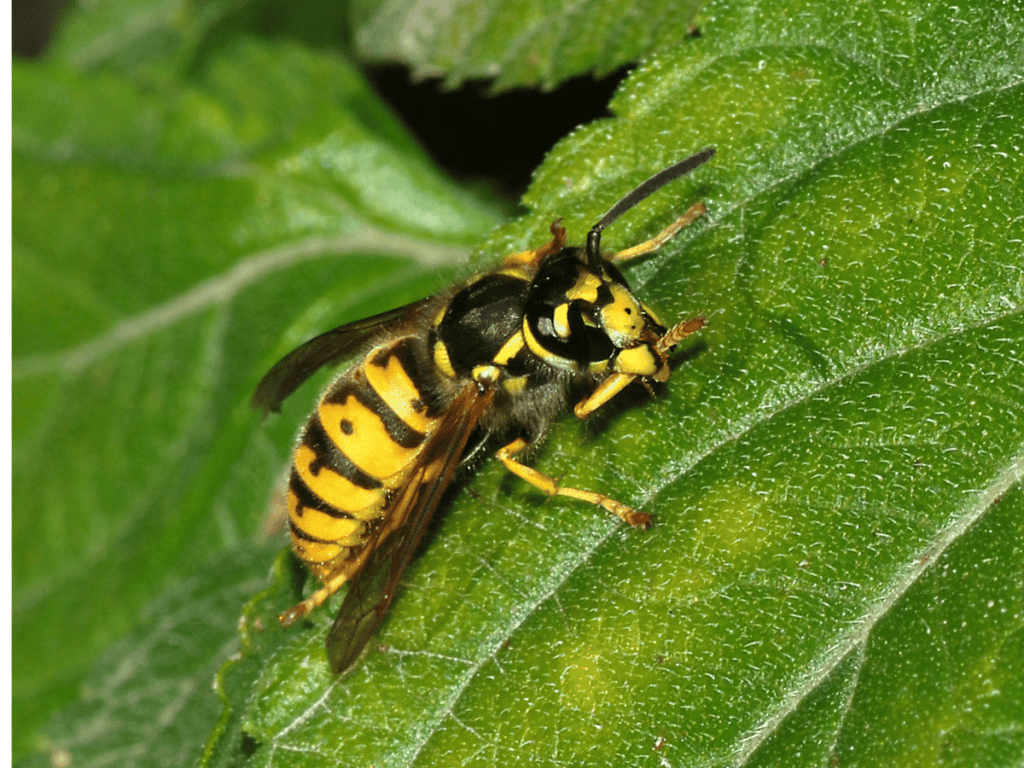

Both wasps and hornets possess smooth, hairless bodies with narrow waists (petioles), segmented body structures, biting mouthparts (mandibles), and antennae with 12-13 segments. Each has two pairs of membranous wings and six legs attached to the section between the head and the abdomen (thorax).
However, hornets are notably larger than most wasps. The largest hornet (that isn’t a wasp) in the world, the Asian Giant Hornet (Vespa mandarinia), can grow up to 2 inches long with a wingspan of 3 inches. The average size for wasps is ⅓ inch (one centimeter) to 1 inch (two and one-half centimeters) long.
Hornets also have a more elongated body, a fuller abdomen, and a wider and more prominent head. They have a thicker thorax and less defined petioles compared to most wasp species.
In terms of color, wasps tend to have brighter colors and more varied patterns. Yellow jackets, for example, have bright yellow and black stripes, while some paper wasps can have brown or even metallic blue coloration. Hornets have darker coloration, typically featuring black and yellow or reddish-brown hues.

It’s important to note that some wasp species can look similar to hornets in terms of coloration and body structure. The bald-faced hornet (Dolichovespula maculata) is a notable exception to the typical characteristics of wasps, as it has a hornet-like build and features a striking black-and-white color pattern instead of the usual yellow and black. They are actually a type of yellow jacket wasp despite their name.
Social Structure
While wasps can be either social or solitary, hornets are exclusively eusocial insects, meaning they have castes with specialized roles, such as foraging, caring for young, or defending the colony. They live in highly organized colonies with complex hierarchies and a caste system consisting of a queen (reproductive female), workers (sterile females), and drones (male reproductive).

The European hornet (Vespa crabro) provides an excellent example of this social organization. The colony is centered around a single reproductive female, the queen. She is responsible for egg-laying and maintaining the colony’s social structure. In Vespa crabro, the queen can lay an average of 2.31 eggs per day. The queen uses pheromones to regulate the behavior of other colony members and suppress worker reproduction.
The majority of the colony consists of sterile female workers. These individuals are responsible for:
- Foraging for food
- Caring for larvae
- Building and maintaining the nest
- Defending the colony
Male hornets, called drones, are produced later in the season. Their primary role is to mate with queens from other colonies. Unlike workers and queens, drones do not have stingers and are generally docile.
European hornet colonies typically maintain between 200–400 workers. This size allows for efficient division of labor while still being manageable in terms of resource allocation. Larger nests, however, may have up to 1,000 workers.
Nesting Habits
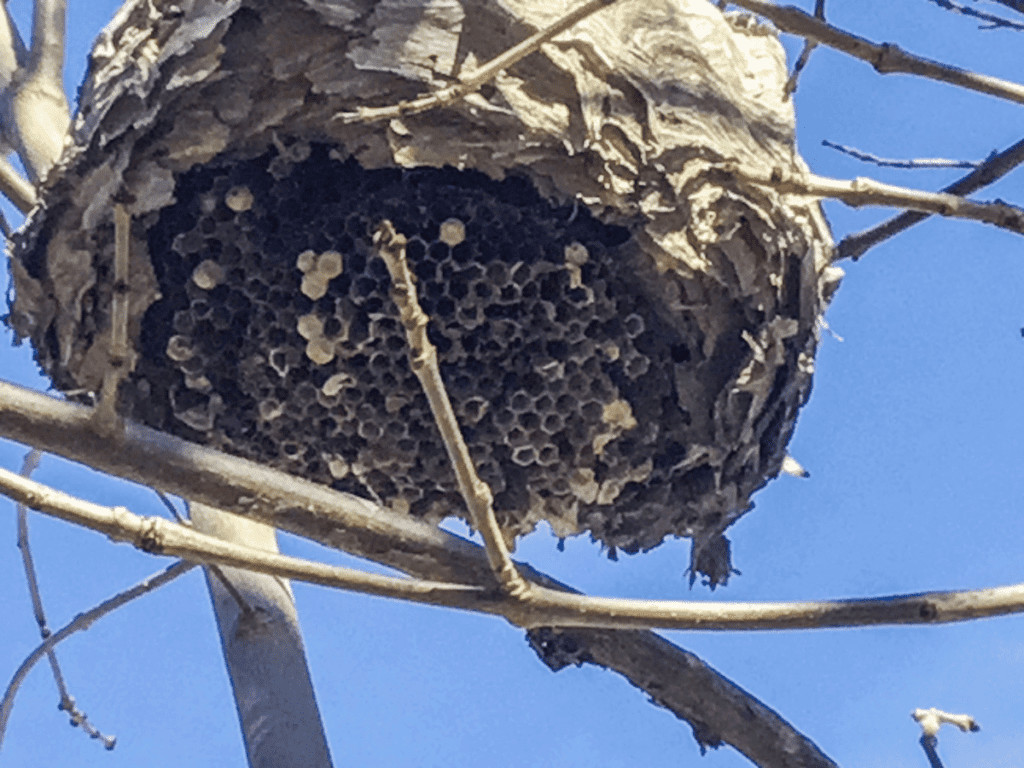

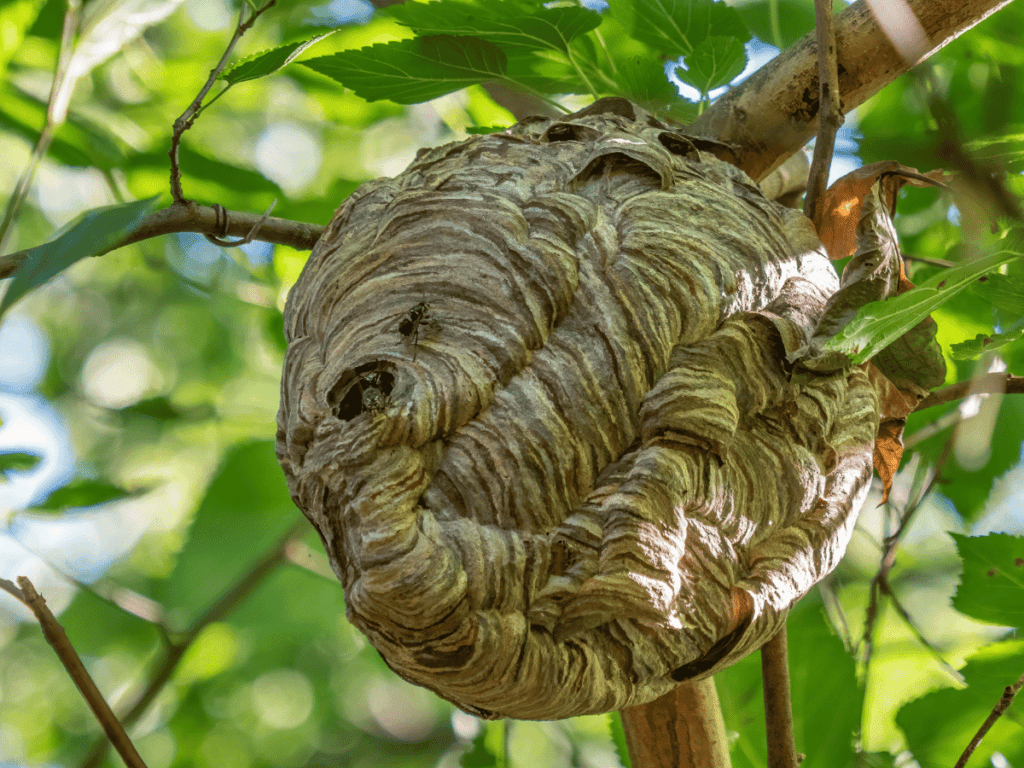
Wasps show a variety of nesting habits that differ between solitary and social species. Solitary wasps typically build individual nests for their offspring, which can take the form of burrows in the ground, cavities in wood, or umbrella-shaped nests in branches. Mud daubers, for example, create tubular nests out of mud. These nests are usually simple and contain one or a few cells where the female lays her eggs and feeds growing larvae with either paralyzed or chewed-up prey.

In contrast, social wasps construct more elaborate nests that house entire colonies. Some wasps, like yellowjackets, build their nests underground. Others build aerial nests made from a paper-like material created by mixing wood fibers with saliva.
Hornet nests are larger and more complex than those of other social wasps. The outer layer of these nests consists of multiple layers, providing excellent insulation that helps the colony maintain a stable temperature. Inside the nest, there are several tiers of combs where eggs are laid and larvae are nurtured. As the colony grows, new combs are added to accommodate the increasing population. Hornet nests can grow to impressive sizes, sometimes reaching the size of a basketball.
Diet and Feeding Behavior
In terms of food preferences and feeding behavior, there’s hardly any difference with hornets and wasps.
Most wasp species are opportunistic feeders and have a varied diet. Adult wasps and hornets, in particular, feed on sweet substances like nectar, tree sap, and nectar-like liquid produced by their young. Their larvae are fed insects caught by adult workers. Solitary wasps would leave paralyzed insects, while social wasps and hornets tend to chew up prey before feeding them to their young.
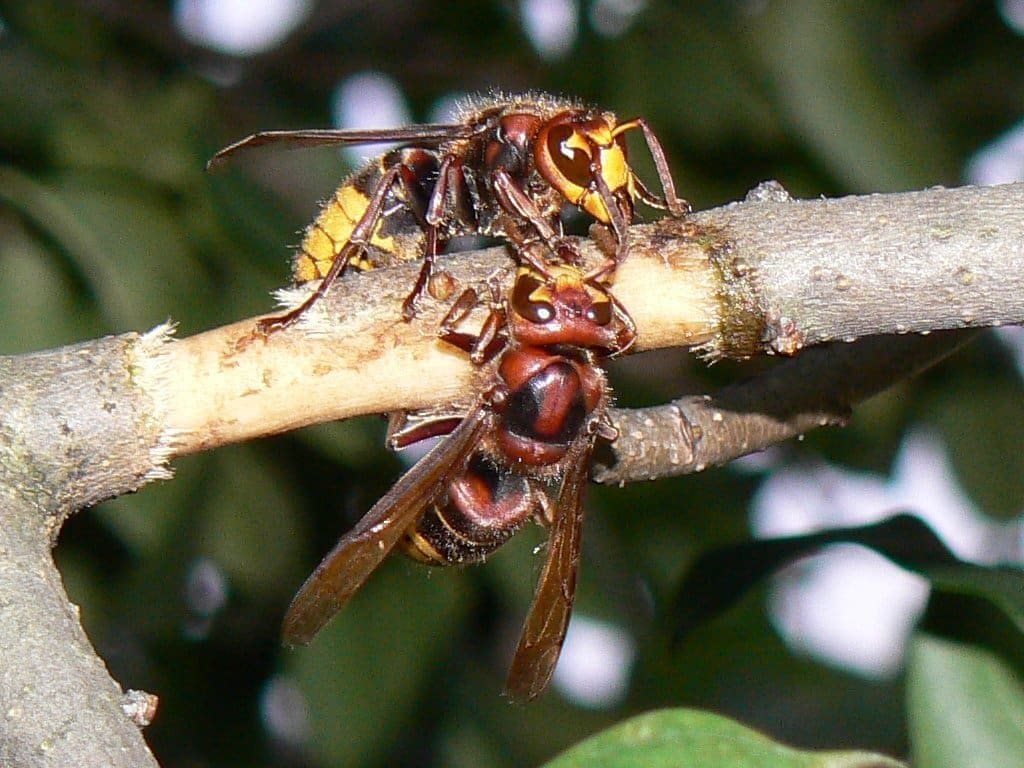
Many wasp species, especially yellowjackets, frequently scavenge for human food around garbage cans and picnics. Hornets are less likely to scavenge human food and instead go for ripe fruit, carving out chunks ranging from small holes to just a core remaining.
Both hornets and wasps help control insect populations, contributing to ecological balance. Hornets, however, may have a greater impact due to their size and preference for larger prey.
Aggression and Stings
Wasps are generally not as aggressive as most people think. While wasps can sting, they typically only do so when threatened or when their nest is disturbed. Most wasp species are relatively docile when foraging away from their nests and will avoid confrontation with humans.
Once threatened, social wasps and hornets release an alarm pheromone that mobilizes other workers. Since a wasp or hornet nest may contain hundreds up to thousands of wasps, you’ll be at risk of getting multiple stings during an encounter.
In general, hornets are considered potentially more dangerous than wasps due to their more aggressive behavior and stronger venom. Hornets are highly territorial and defend their nests ferociously if they perceive a threat. Their venom is more potent than other wasp species and contains 5% acetylcholine, leading to more intense pain and potentially more severe reactions.
Conclusion
While both are considered dangerous when near humans, hornets are typically more worrisome due to their size, aggressiveness, and the potency of their stings. If you encounter either species nesting near your property, professional pest control intervention is recommended, as both can defend their nests aggressively and pose significant health risks through multiple stings.
If you need help dealing with an aggresive hornet’s nest or a persistent wasp problem, talk to one of our pest experts at MMPC today.
